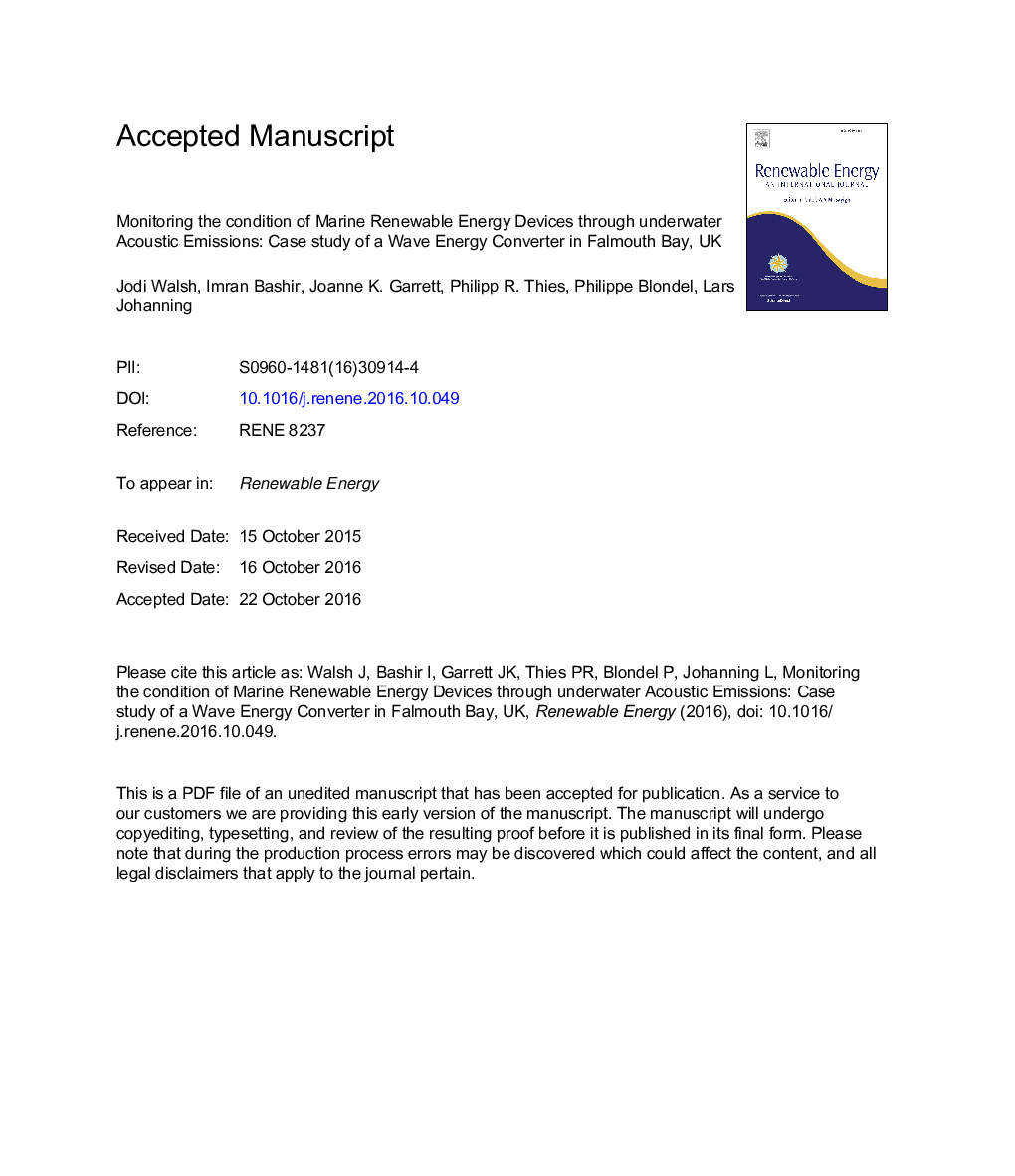| Article ID | Journal | Published Year | Pages | File Type |
|---|---|---|---|---|
| 4926819 | Renewable Energy | 2017 | 17 Pages |
Abstract
Maintaining the engineering health of Marine Renewable Energy Devices (MREDs) is one of the main limits to their economic viability, because of the requirement for costly marine interventions in challenging conditions. Acoustic Emission (AE) condition monitoring is routinely and successfully used for land-based devices, and this paper shows how it can be used underwater. We review the acoustic signatures expected from operation and likely failure modes of MREDs, providing a basis for a generic classification system. This is illustrated with a Wave Energy Converter tested at Falmouth Bay (UK), monitored for 2 years. Underwater noise levels have been measured between 10Â Hz and 32Â kHz throughout this time, covering operational and inactive periods. Broadband MRED contributions to ambient noise are generally negligible. Time-frequency analyses are used to detect acoustic signatures (60Â Hz-5Â kHz) of specific operational activities, such as the active Power Take Off, and relate them to engineering and environmental conditions. These first results demonstrate the feasibility of using underwater Acoustic Emissions to monitor the health and performance of MREDs.
Keywords
Related Topics
Physical Sciences and Engineering
Energy
Renewable Energy, Sustainability and the Environment
Authors
Jodi Walsh, Imran Bashir, Joanne K. Garrett, Philipp R. Thies, Philippe Blondel, Lars Johanning,
